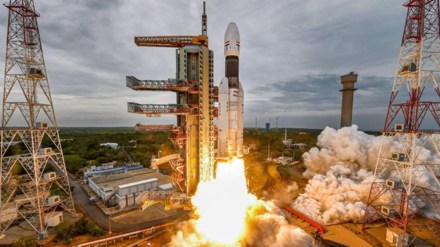India’s ambitious lunar exploration mission, Chandrayaan-3, has achieved a significant milestone by breaking free from Earth’s orbit and embarking on its momentous journey to the Moon. After a successful trans-lunar injection (TLI), the spacecraft is now on a lunar transfer trajectory, heading towards the Moon’s vicinity.
The next critical step in the mission is the Lunar-Orbit Insertion (LOI), scheduled for tomorrow (August 5), which will mark the beginning of the lunar-centric phase. During this phase, the spacecraft will orbit the Moon four times, getting progressively closer to the lunar surface with each orbit. The highly anticipated soft landing is planned for August 23, during which the lander will separate from the propulsion module and attempt a gentle touchdown near the southern polar region of the Moon. This manoeuvre requires precise braking techniques to ensure a safe landing.
Prior to the landing attempt, the team will conduct thorough imaging of the landing site region to identify safe zones, free of hazards and potential obstacles. Safety is of utmost importance in this complex mission.
The Beginnings
Chandrayaan-3 was successfully launched into orbit on July 14 by the Indian Space Research Organisation (ISRO) aboard the powerful Launch Vehicle Mark-3, also known as the Geosynchronous Satellite Launch Vehicle Mk-III. After a 40-day journey, the spacecraft is expected to make history by executing a soft landing near the Moon’s south pole. If successful, India will become the fourth country to achieve such a feat and the first to accomplish a soft landing in this region of the lunar surface.
This mission serves as a follow-up to Chandrayaan-2 and aims to demonstrate end-to-end capabilities in safe landing and rover operations on the lunar surface. The spacecraft is equipped with a lander and rover configuration, both carried by a propulsion module until reaching a lunar orbit of 100 km.
The propulsion module of Chandrayaan-3 carries an important payload known as ‘Spectro-polarimetry of Habitable Planet Earth (SHAPE),’ which is designed to study spectral and polarimetric measurements of Earth from the lunar orbit. This data will provide valuable insights for scientific research.
Tracking and telemetry
Behind the success of any space mission lies the crucial role of tracking and telemetry, serving as the eyes and ears of space agencies. Giant antennae positioned at various locations maintain constant communication with the spacecraft, allowing for data exchange and issuing essential commands.
During its time in Earth’s orbit, Chandrayaan-3 executed five Orbit Raising manoeuvres, propelling it further away from the planet. The craft was recently pushed beyond Earth’s orbit, setting it on course to rendezvous with the Moon on August 5. All the manoeuvres performed by the spacecraft are based on commands from ground stations operated by ISRO.
What’s ISTRAC and why does it play a vital role ahead?
The Indian Space Research Organisation Telemetry, Tracking, and Command Network (ISTRAC) in Bengaluru plays a vital role in providing tracking support for all satellite and launch vehicle missions of ISRO. ISTRAC’s responsibilities include carrying out mission operations for operational remote sensing and scientific satellites, providing Telemetry, Tracking, and Command (TTC) services from launch vehicle lift-off to satellite orbit insertion, and estimating preliminary orbit in space. The efforts of ISTRAC are complemented by ISRO’s Indian Deep Space Network in Karnataka.
As the countdown to the Lunar-Orbit Insertion and the subsequent soft landing continues, the entire nation watches with bated breath, hopeful that Chandrayaan-3 will achieve its objectives, further solidifying India’s position as a leading player in space exploration. The mission promises to push the boundaries of scientific knowledge and pave the way for even more ambitious space endeavours in the future.
